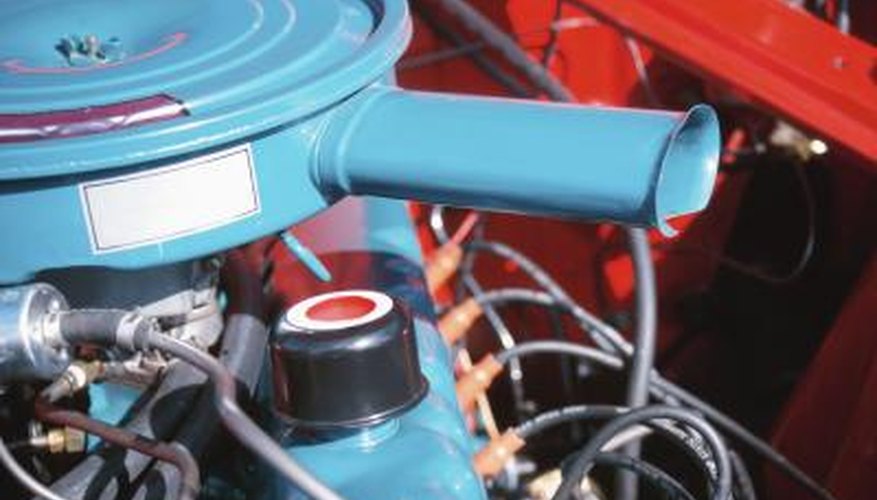Your car's carburettor comes equipped with several jets, depending on the model. These jets help control the flow of fuel in different sections of the carburettor. Over time, gasoline leaves traces of varnish and dirt that build up around small passages and orifices, restricting or blocking fuel flow and causing engine performance problems. By paying attention to your vehicle symptoms, you can learn whether one or more jets are clogged and in need of service.
- Your car's carburettor comes equipped with several jets, depending on the model.
- By paying attention to your vehicle symptoms, you can learn whether one or more jets are clogged and in need of service.
Start the engine and let it idle. If the engine stalls a few seconds after firing up the engine, your carburettor idle jet might be plugged up with dirt or varnish.
Fire up your engine and drive to a slow traffic or back road, if necessary, to test your vehicle. Drive down the road and begin to accelerate to about 30mph. Note whether your car does not accelerate correctly. Also note if you can feel the engine almost dying, or remaining at a certain speed without accelerating any further for a few seconds before responding. In this case, the idle and/or economiser (if equipped) jets are dirty and in need of cleaning.
Drive down the road and pay attention to the engine as you accelerate. Note whether the engine hesitates or stalls. You might feel the car jerking because of a cylinder fails to fire, or you might notice the engine backfiring through the carburettor as you accelerate. In either case, the carburettor economiser jet (if equipped) and/or idle jet might be partially clogged with fuel varnish, restricting fuel flow.
- Drive down the road and pay attention to the engine as you accelerate.
- You might feel the car jerking because of a cylinder fails to fire, or you might notice the engine backfiring through the carburettor as you accelerate.
Pull off the road and stop the engine. Open the bonnet and remove the air cleaner assembly from the top of the carburettor using a pair of slip joint pliers. Operate the throttle manually as you look through the air horn bore. You should see a straight stream of fuel sprayed inside the bore or air horn. If you notice a weak stream, either the economiser and/or idle jet is partially clogged. Keep in mind that this might also be an indication of problems with the carburettor accelerator pump.
Accelerate your vehicle to about 45 to 50mph. If you notice the engine does not develop enough power as you reach the top speed, the main jet might be clogged, causing a lean air/fuel mixture.
TIP
The most common cause for a jet to fail is varnish or dirt build-up. Usually in this case, more than one part could be causing trouble. Varnish and dirt can find their way through precision passages and components involved in the passage of air and/or fuel inside your carburettor. If you have determined one or more carburettor jets are dirty or clogged, perform a thorough carburettor cleaning.
